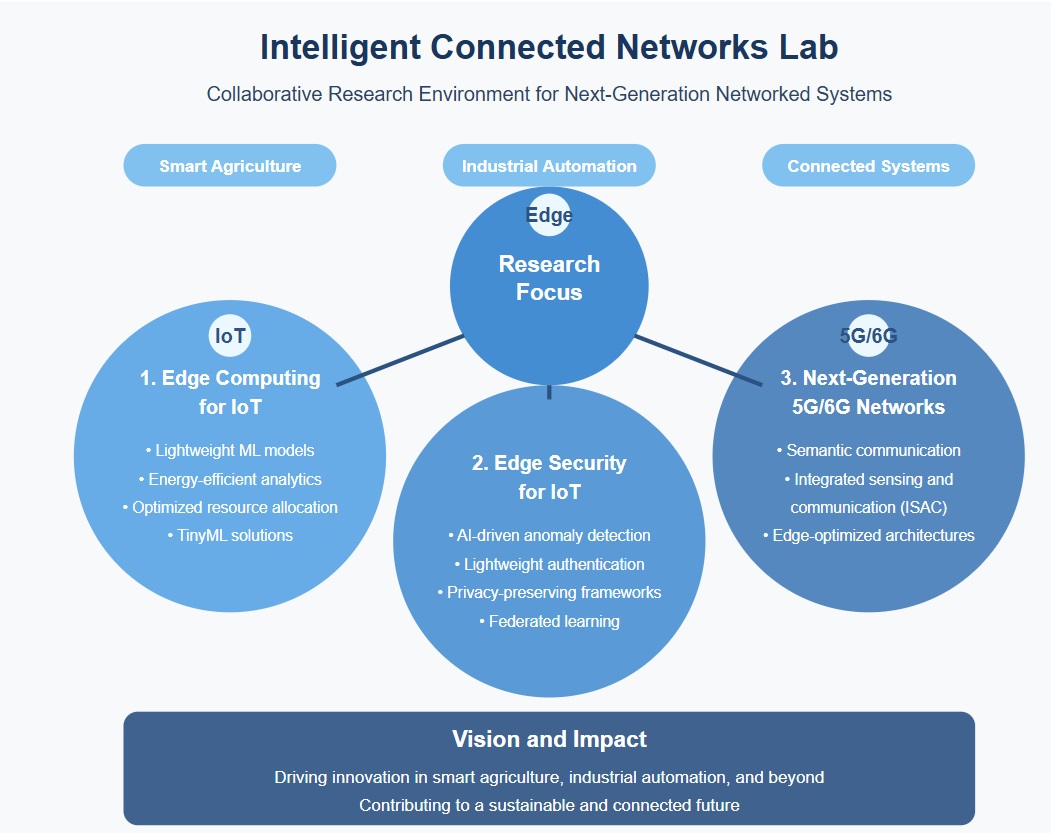The Intelligent Connected Networks Lab strives to cultivate a collaborative research environment dedicated to pioneering innovative solutions for next-generation networked systems, focusing on edge computing, the Internet of Things (IoT), and advanced wireless communication technologies. Our research is structured around three key pillars, addressing critical challenges such as performance, security, and emerging 5G/6G paradigms in resource-constrained environments.

Focus On
1. Edge Computing Performance Enhancement for IoT
Optimizing TinyML solutions for resource-constrained IoT devices in agriculture and industrial settings through: lightweight ML models for microcontrollers, energy-efficient real-time analytics algorithms, and optimized resource allocation between edge and cloud systems.
2. Edge Security for IoT
We are creating better security systems, such as AI tools to spot threats in real-time, simple authentication methods for devices with limited resources, and privacy-focused approaches using federated learning and differential privacy.
3. Next-Generation 5G/6G Networks
We are pioneering edge-centric innovations through semantic communication frameworks that prioritize meaningful information transmission, integrated sensing and communication (ISAC) systems, and edge-optimized network architectures that support URLLC and mMTC requirements.
Our Research
Challenge
The Intelligent Connected Networks Lab tackles key challenges in edge computing, IoT security, and 5G/6G networks. We work on solving problems with limited resources in TinyML for IoT, create simple security solutions for spotting unusual activity and verifying identities, and lead the way in semantic communication and combined sensing for future networks, making sure they are efficient, scalable, and reliable.



